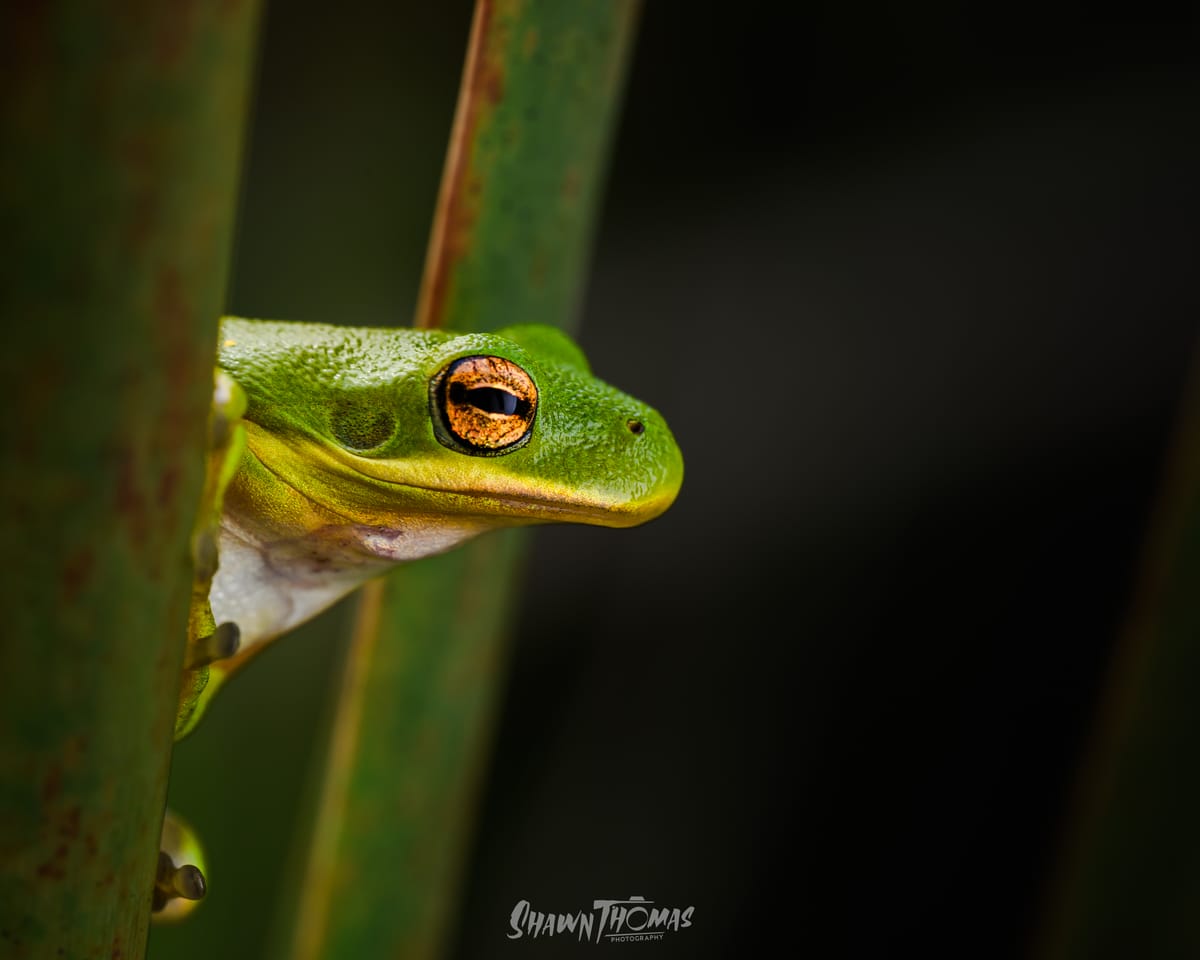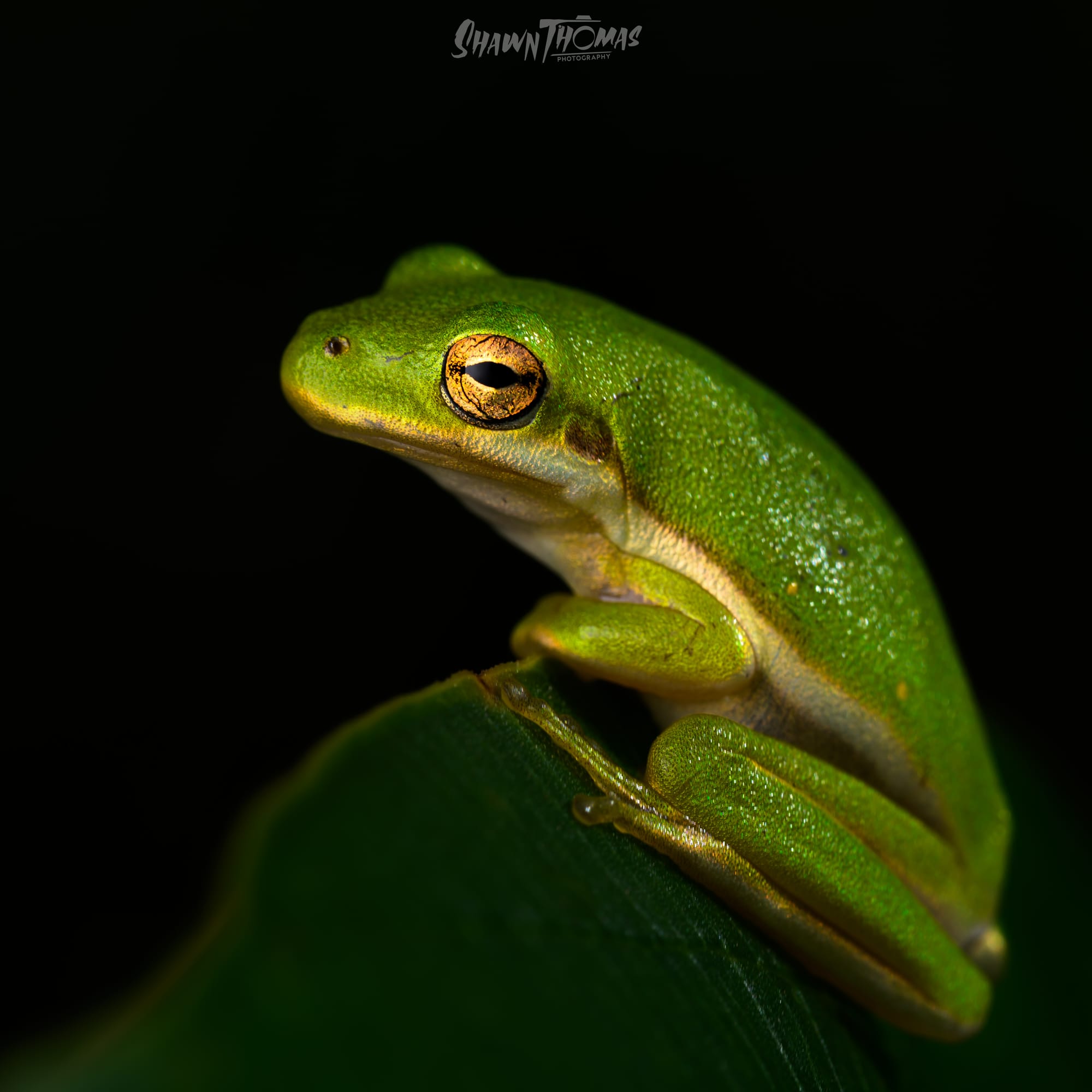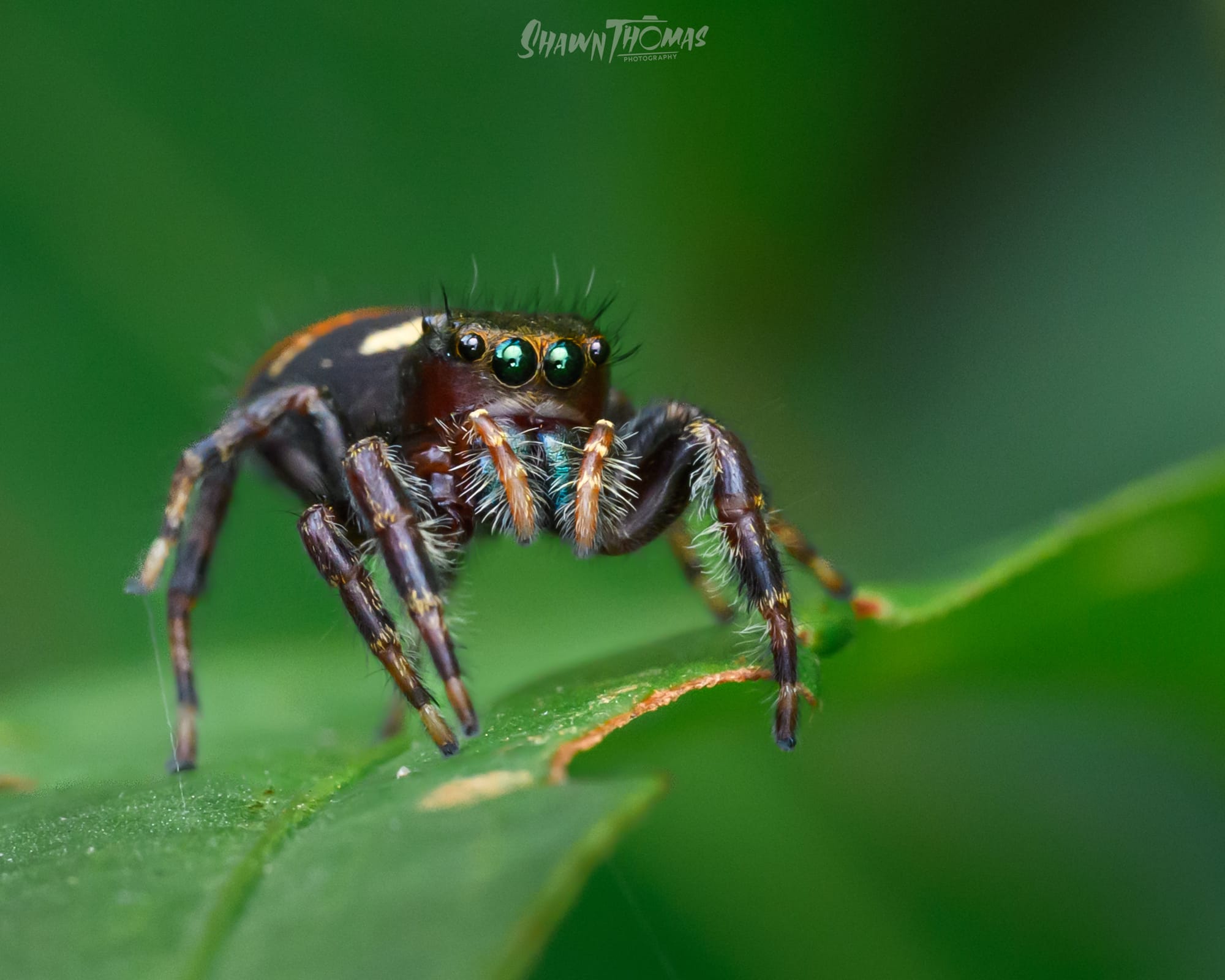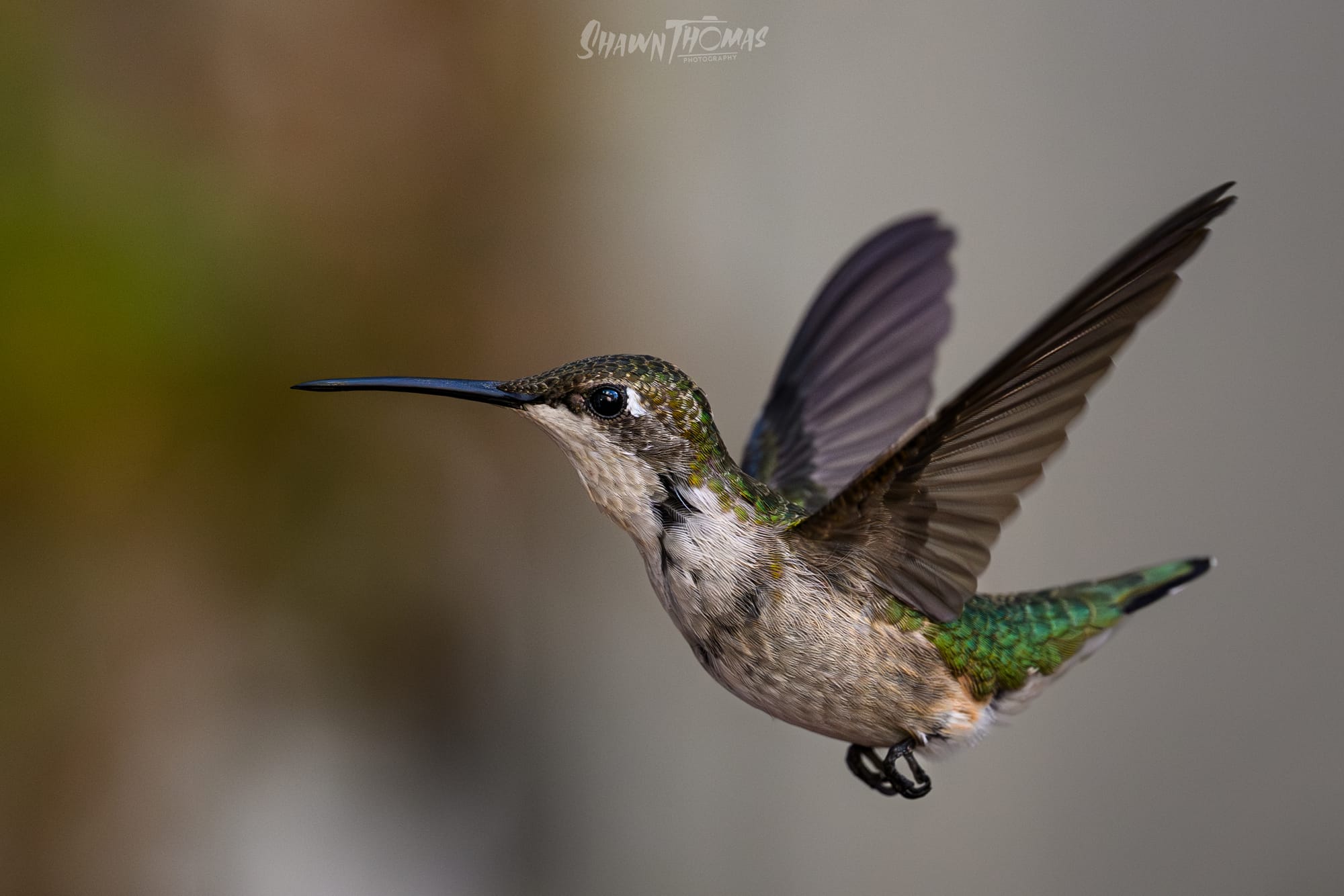A Macro morning Adventure
A wildlife photographer's deep dive into the tiny world! I swapped my telephoto for a 105mm macro to shoot frogs and spiders. Macro gives you creative control over light that big-glass shooting doesn't. My secret? A simple AK diffuser. Plus, a bonus hummingbird shot using the macro lens!

As a dedicated wildlife photographer, I usually have a 600mm lens attached to my camera and I’m aiming for things that are several hundred feet away. So, when my wife (the real macro enthusiast in the family) was getting ready for a dedicated macro photography retreat, I wanted to join her for a morning of practice.
The goal? To swap my telephoto safari hat for a tiny-world explorer one, and try to be one of the "cool kids" and get deeply satisfying, high-quality close-up shots. It was a refreshing reminder that some of the most beautiful subjects are literally right under your nose.
Gear Check: The Un-Cool Kid's Setup
Let’s get the elephant out of the room. I’m not rocking an OM-1 with a 2x reproduction ratio 90mm lens. That setup is phenomenal for the serious macro crowd, but I'm an opportunist and I really don't shoot macro. If you're serious about it, thats what I would check out though. That said I wanted to see what I could accomplish with my existing kit, which does include a macro lens, and its no slouch either.
Here is the setup I used for this morning's close-up adventures with frogs and spiders:
- Camera Body: Nikon Z8
- Lens: Nikon Z 105mm f/2.8 VR S Macro
- Flash: Profoto A10 (Honestly, overkill, but it's what I have!)
- The Game Changer: The AK Diffuser (More on this essential piece below)
I chose to link my local camera shop where I bought the gear for these links, because I appreciate them.
The takeaway here isn't the specific brand or model though; it's that you can create beautiful macro images using a modern mirrorless camera and a quality dedicated macro lens, even if that camera spends most of its life tracking distant eagles.
Taming the Light: The AK Diffuser Difference
For dedicated big-glass shooters like me, traditional wildlife photography is often a game of going out and hoping real hard for the right magical conditions, the sun angle, the cloud cover, the ambient light has to be perfect. That means we get about a 15 minute window every day where the shooting is great.
That’s why I found macro so fascinating: it’s one of the few branches of wildlife photography where you can actually control the light. You don't have to wait for the perfect sunset; you bring your own perfect sun!
How do you light a tiny subject hidden in leaves while achieving a soft, even look?

My secret weapon is the AK Diffuser (I highly recommend checking them out and getting one!). If there's one piece of kit that makes macro accessible and fun for the non-macro photographer, this is it. It effectively takes the harsh, focused beam of a standard flash and wraps it around your subject.
This is critical because it lets you focus on composition and focus stacking (if you choose to), rather than fighting harsh shadows. It's a massive, soft light source for a small world.
There are many brands that make diffusers and because of my wife loving macro I've gotten to try a lot of them, my personal opinion, AK is the best there is bar none. It's compact, folds down to fit in a camera bag, snaps together, and it built really nice.
My Simple Handheld Technique
My settings were dead simple for every shot, proving you don't need a focus rail or a tripod (though they help, of course). I shot everything handheld and let the flash and diffuser do all the heavy lifting:
Shutter Speed: 1/200s
Aperture: f/14
ISO: Base or low ISO (often 100 or 200)
The f/14 gave me the depth of field I needed to work, macro is notorious for the lack of DoF you get in images, high aperture is your friend here. The 1/200s was fast enough to kill the ambient light (especially useful for achieving those pure black backgrounds) and slow enough to sync with my flash.
Subjects of the Morning: Spiders and Frogs
My wife and I spent the morning searching for tiny wildlife. We found subjects ranging from charismatic jumping spiders to brilliant green frogs tucked away in the dense foliage.

This shot is a perfect example of the "flash-on-manual" technique. By setting the shutter speed high and the flash output just right, you can effectively underexpose the background, even if it's just a few feet away, creating that dramatic, pure-black canvas. The AK diffuser lights the frog perfectly, highlighting the texture and that stunning copper eye without harsh shadows.

This image shows the flexibility of the diffuser. Here, I allowed more ambient light to hit the background, letting the flash act as a sophisticated fill light to emphasize the frog's textures and color. The light green backdrop gives it a softer, more documentary feel than the high-contrast black background shot.

Spiders are the ultimate macro challenge due to their movement, but that's what makes them so rewarding. The flash freezes the action, allowing the camera to capture the fine hairs and the iridescent colors of the spider's mouthparts and those fantastic little eyes. It’s hard to believe this much detail exists in a subject smaller than your pinky nail!
Bonus Capture: The Hummingbird on Macro Glass

You may be thinking, "That's a fantastic shot, but that's not macro!" And you'd be absolutely right. This hummingbird image was a total experiment, and it happened thanks to Nikon’s Auto Capture feature.
I set up 105mm macro lens and Z8 on a tripod pointed near a feeder in my backyard, activated Auto Capture (which lets you set parameters for when the camera fires), and walked away.
The 105mm macro, while a specialized lens, is an incredibly sharp prime lens. It also provides different compression than my usual 600mm lens. Used at a distance, it captures this flying hummingbird with glorious detail and beautiful background separation, proving that high-quality glass is high-quality glass, even if you’re using it "wrong."
If you’re a wildlife photographer hesitant to dive into the macro world, take a page from my book. Borrow a macro lens, grab a diffuser, and just go shoot. You'll be amazed at the world you've been missing.
What unexpected macro subject have you found in your own backyard? Let me know in the comments!
Check out my whole portfolio at www.shawnthomas.art
And hey why not subscribe to the blog, I put out a new blog every Tuesday and you can have it delivered right to your inbox!
